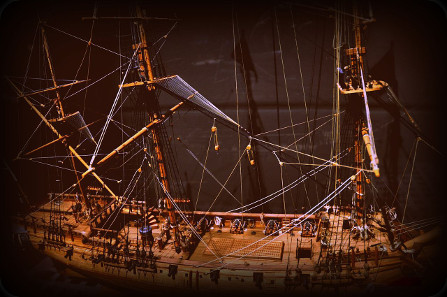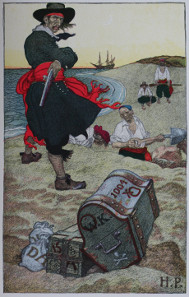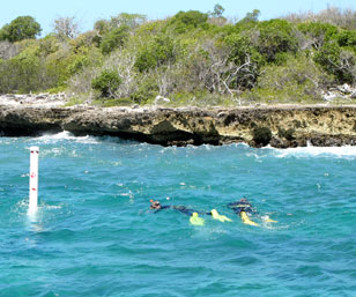June 4, 2015 – Once again a shipwreck of the legendary pirate William Kidd is said to have been found, this time off Madagascar. The impressive proof: a silver bar weighing over 50 kilograms. But immediately some people expressed their doubts partly founded in the finder, Barry Clifford.
Model of the Whydah. Photograph: jjsala / http://creativecommons.org/licenses/by/2.0/deed.en
Since decades the American Barry Clifford has been searching for historical shipwrecks all around the globe. He owes his prominence to the ‘Whydah’ which he found in 1984. This wreck was catchpennily identified as a pirate ship. Following this scoop many TV channels wanted to accompany Clifford on his expeditions (paying probably high sums for that privilege).
Howard Pyle, Kidd on board of his ship Adventure Galley, before 1911.
In 2000 Clifford announced that he found the ‘Adventure Galley’ off the coast of Madagascar. This ship was the flagship of the infamous Captain Kidd and it was sunk in 1699. At first, however, its identification was not certain.
So, in 2015 Barry Clifford returned to Madagascar with a British TV team and found right during the first diving a silver bar weighing over 50 kilograms which he claims to be part of Captain Kidd’s treasure.
Howard Pyle, Captain Kidd overseeing a treasure burial, before 1911.
Clifford handed the object over to Madagascar’s President Hery Rajaonarimampianina during a ceremony which was well-covered by the media stating: ‘While investigating the shipwreck I believe to be Captain Kidd’s Adventure Galley I uncovered a giant silver bar. All the evidence points to it being part of Captain Kidd’s treasure. It’s a huge find for my team but an even bigger find for Madagascar and world history.’
During the same ceremony the UK and US ambassadors clearly expressed why the discovery of this treasure had come so handy: it hopefully will boost the island’s tourism.
By forsaking all property claims of his own Clifford won the authorities’s support. Apparently he earns enough from selling this event to the TV media. Madagascar has retroactively authorised the discovery. Anyway, the government contacted the UNESCO in addition in order to examine Clifford’s results.
The first reaction of UNESCO was far less positive. The UN cultural organisation criticised Clifford because although he staged a media spectacle, he did not conduct a scientific excavation. The whole story seemed like an enactment which was to be examined in the first place according to UNESCO expert Ulrike Guérin. The organisation is very critical of Clifford since he wholeheartedly announced the discovery of Columbus’s flagship Santa Maria in 2014. This communication went around the world but was confuted a couple of months later by UNESCO experts: the wreck was much too young to be the Santa Maria.
So, Clifford has quite a reputation for announcing hypotheses whose substance has yet to be proven. Maybe he actually found Kidd’s treasure but maybe its nothing else than an excellently staged hoax.
Fritz Hanselmann, PhD student in anthropology at Indiana University documenting one of the ‘big cannons’ as described by Captain Kidd.
Proven facts about Captain Kidd did provide Indiana University, though. Experts of this university took care of the excavations in the Dominican Republic where ancient cannons were found at the coast in 2007.
The archaeologists proved that these were the remainings of an Armenian trading wessel called Quedagh Merchant seized and sunk by Kidd in 1699. The finding place was scientifically documented, the findings allocated in various museums.
Marker buoys indicate divers where they can see the shipwreck.
In 2011 the government installed in collaboration with the archaeologists an underwarter park where divers can admire the remainings of the ship.
To learn more about the silver bar found off Madagascar you can read this CTV news article …
… or that article from the Guardian.
About the Indiana University’s project in the Dominican Republic informs the university’s press department.








